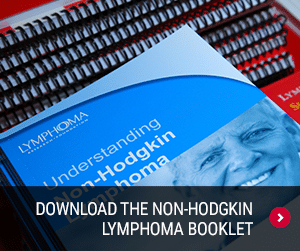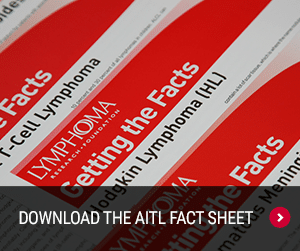
What is Lymphoma?
Angioimmunoblastic T-Cell Lymphoma
Angioimmunoblastic T-cell lymphoma (AITL) is a rare, often but not always, aggressive (fast-growing) form of peripheral T-cell lymphoma (PTCL). While AITL only accounts for one to two percent of all NHL cases in the United States, it is one of the more common subtypes of T-cell lymphomas. Elderly patients are more likely to be diagnosed with AITL.
Symptoms
Symptoms of AITL include high fever, night sweats, skin rash, and autoimmune disorders such as autoimmune hemolytic anemia (AIHA) and immune thrombocytopenia (ITP). As a result of these autoimmune disorders, the body’s immune system attacks its own cells and tissues, such as red blood cells (AIHA) or platelets (ITP).
Diagnosis
Diagnosing AITL requires taking a biopsy (sample of the tumor tissue) and looking at the cells under a microscope. A series of other tests may be done to determine the extent, or stage, of the disease. These can include blood tests, a computed tomography (CT) scan, a positron emission tomography (PET) scan, a magnetic resonance imaging (MRI) scan, and bone marrow biopsy.
The majority of patients with AITL are diagnosed with advanced-stage disease, either Stage III or Stage IV. In Stage III, affected lymph nodes are found both above and below the diaphragm. In Stage IV, one or more organs beyond the lymph nodes are affected, such as the bone, bone marrow, skin or liver.
To learn more about angioimmunoblastic T-cell lymphoma, download the AITL Factsheet.
See also: PTCL Fact Sheet


